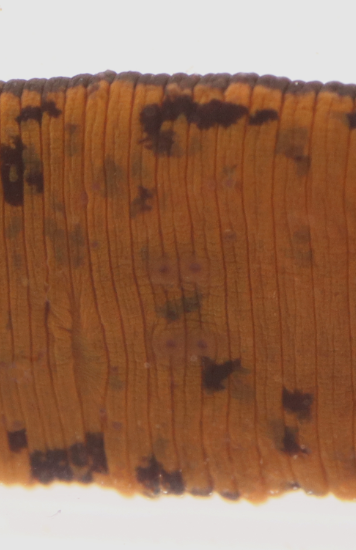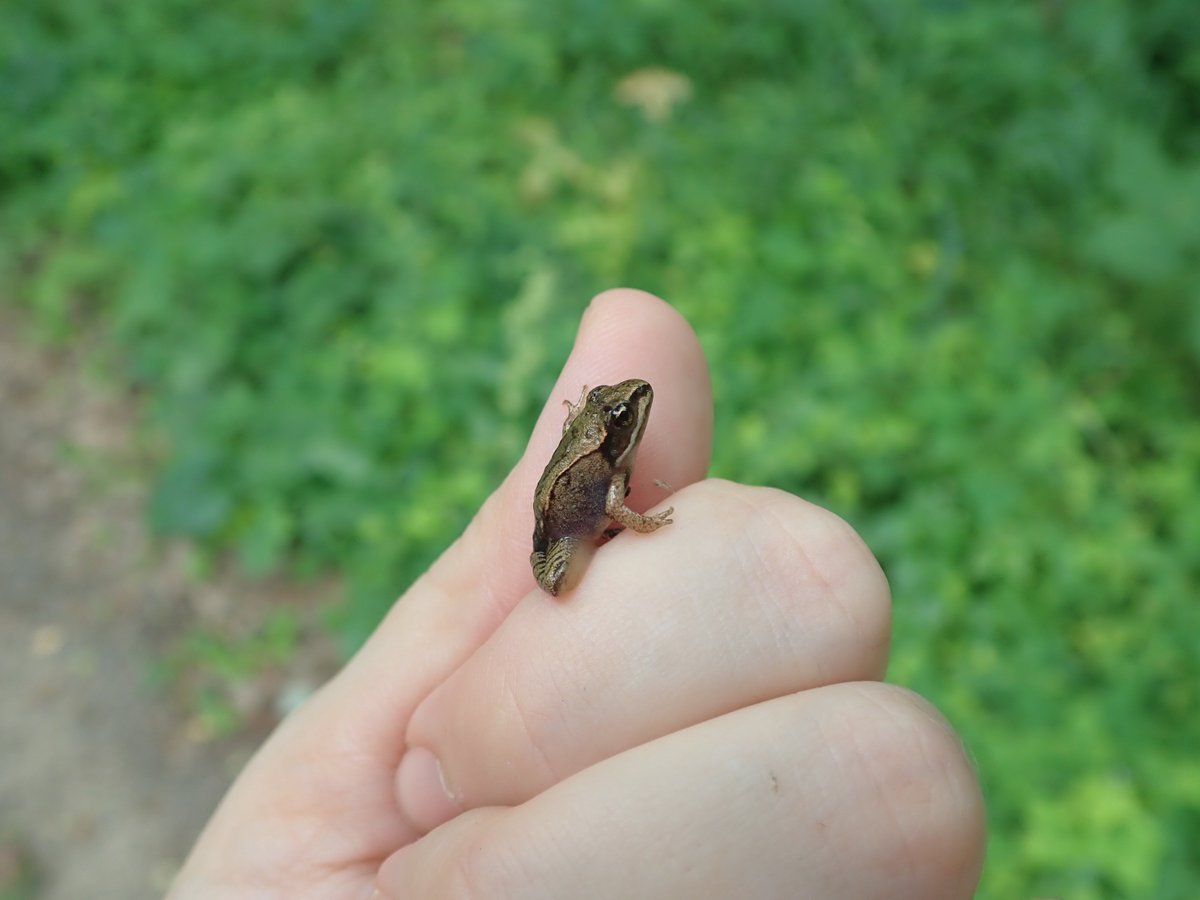#leech photo session this afternoon! Things I learned:
1) they will *absolutely* climb out of photobox
2) gonopores are not where I thought (lots of photos focusing on posterior sucker b4 I figured it out🤦♀️)
3) we have American medicinal leeches (Macrobdella decora) @ this site!
1) they will *absolutely* climb out of photobox
2) gonopores are not where I thought (lots of photos focusing on posterior sucker b4 I figured it out🤦♀️)
3) we have American medicinal leeches (Macrobdella decora) @ this site!
Ventral shot of an American medicinal leech (Macrobdella decora) from a prairie pothole pond in central MN.
To distinguish it from others in the same genus, you've got to find a cluster of glands on the ventral surface (circled).
To distinguish it from others in the same genus, you've got to find a cluster of glands on the ventral surface (circled).

In American medicinal leeches (#Macrobdella decora), you should see a cluster of 4 glands arranged in two rows. Here's a close up of that circled section on a live specimen.
Thanks to @danielledecarle for showing me what to look for! (hopefully I've gotten it right!😅)
Thanks to @danielledecarle for showing me what to look for! (hopefully I've gotten it right!😅)

• • •
Missing some Tweet in this thread? You can try to
force a refresh














